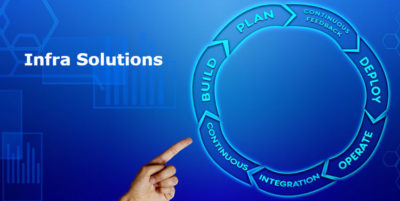Highlights:
- These structural analysis and design software help in decision-making, change management and collaboration.
- They can make the designing of 3D models for road infrastructure projects more seamless and efficient, thus minimizing the time and effort required for element analysis.
Few years ago, when road design technology was in its nascent stage, the pace of planning and construction of buildings was quite slow. But with rapid technological advancements, civil engineers have been able to speed up their design, analysis and construction processes while ensuring quality.
Typically, comprehensive road design software are in great demand among government departments and transportation agencies due to increased demand for civil infrastructure. It brief, it is an all-in-one application that offers end-to-end road design capabilities, including everything related to designing, planning, and managing buildings, townships, bridges, roads, transportation engineering, and many more.
You can choose from several road design software options that can help you design large projects in no time. In this blog, we will discuss how it can help you with decision-making, change management and collaboration.
Better data acquisition leads to better decisions
From primitive methods like collecting on-field data through manual analysis and testing, data acquisition in civil infrastructure has seen a lot of progress so much so that data photos are being captured through point clouds and drones. Multidiscipline teams then use this real data to develop accurate georeferenced 3D design models for a real context.
As it is known, precise data acquisition is the key to accurate and efficient project delivery of road infrastructure projects.
Here, one of the foremost things towards creating 3D models for road infrastructure projects is the ability to compile useful multidiscipline data and evaluate existing conditions from varying sources.
These models are easily understandable and shareable in real-time, which fuels the decision-making process and improves team collaboration. After all, designing in real-world conditions is crucial.
Business Benefits:
- Road and highway engineers can make informed decisions right from the initial stages of design.
- Accelerated design and construction workflows result in effective and timely project delivery.
- Detailed reality data at the start of the project helps reduce survey rework and design delays, thereby increasing productivity.
- Improve accuracy by eliminating design errors before construction and verifying operations performance against schedule.
- Better decisions at an early stage can help minimize design changes, thus reducing costs and ensuring a better return on investment.
- The ability to review how designs interact with existing conditions helps improve and ensure safety in the future.
Further, with the help of a slew of design software tools, designers and road engineers can develop a connected and open 3D model environment. This ensures enhanced constructability, cross-discipline design review, conflict resolution, and risk mitigation before construction commences.
Such features take care of all aspects of detailed road and highways design – be it reality modelling, geotechnical, drainage, subsurface utilities, terrain, road, roadway and furniture, among others.
Better collaboration leads to better outcomes
With the shift in the working module today, collaboration in civil projects has moved from real face-to-face meetings to virtual teams distributed around the world. This has pressed upon the need to maintain transparency of project details, efficient communication between teams, and the capability to integrate data from multiple disciplines.
No matter what you’re designing – roads, bridges, roundabouts, or ponds – road design software can quickly and easily integrate project data across disciplines, teams, and locations into a single model.
Such software offer a full view of the project by consolidating data from various teams, locations, and disciplines in a single model, thus enhancing collaboration.
Integrating data from multiple sources into a 3D design model allows one to gauge how it interacts early in the design process, thus ensuring all project data is working in tandem without conflict.
Business Benefits:
- The ability to see and use everyone’s data using of a single software enables businesses to increase productivity and deliver projects in time.
- Efficient communication between the teams helps minimize errors and omissions before the actual construction starts.
- Better decision-making and collaboration early in the project will reduce changes and lower costs for the business.
- Easy collaboration between teams reduces risk factors as there are fewer problems in field coordination and changes during construction.
Better change management leads to better project delivery
With gradual changes happening in the world of civil infrastructure, a design professional must be truly competitive in meeting contract requirements within the time frame, each time, and regardless of the constant changes. The need is for effective, dynamic and easy management of design changes without project delays.
New road design software available in the market have a built-in capacity to fulfil all demands of the constantly evolving infrastructure industry. The software incorporates critical project data from all disciplines like buildings, drainage, utilities, etc.
The software opts for a model-based approach, placing the 3D model at the centre stage of your design and the hub for all data. This enables you to work from a single live and dynamic model.
Furthermore, it helps design various project aspects in a single composite model, ensuring that the design data conveys the engineered intent. Hence, it provides a wide range of accurate deliverables.
Business Benefits:
- Model-based design approach can help remove not just the tedious work of the designer but can also eliminate their frustration. This has a positive impact as it increases productivity, leading to a higher return on investment for the business.
- The communication gap between stakeholders like owners, contractors, and designers can be minimized to a great extent. This helps reduce the lag time and the need for many changes. You can work better and faster!
- You can save time and money by drawing references from outside data from other consultants on adjacent projects. This reduces changes in the future and minimizes the effort of re-work.
- Designers can make the necessary changes and watch them automatically update in different views without any user intervention. This enables them to refine their designs effortlessly, reduce manual work, and reduce error and project delays.
Takeaway
Latest design road design software are equipped with the latest technology that enables efficient designing, modelling, and producing timely deliverables in an interactive and dynamic environment.
Such software supports multiple aspects of a design, including geotechnical, terrain, roadway furniture, reality modelling, drainage, subsurface utilities, etc.
The model-centric methodology of such software is very reliable and useful in managing the ongoing changes in construction documents like the plan profile sheets and cross-sections.
Going with a road design software that aids you with all the benefits mentioned above can always be a good idea!












